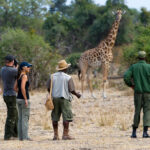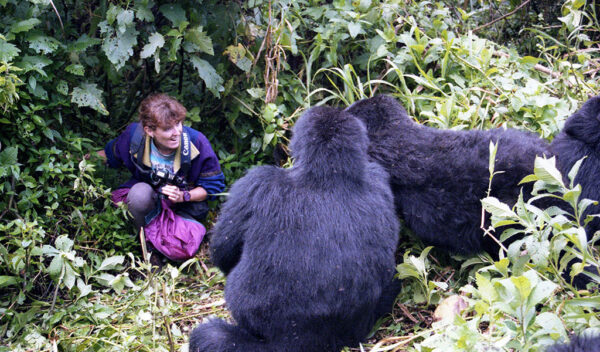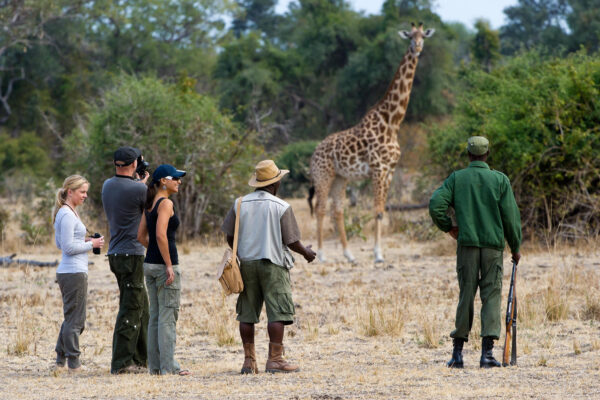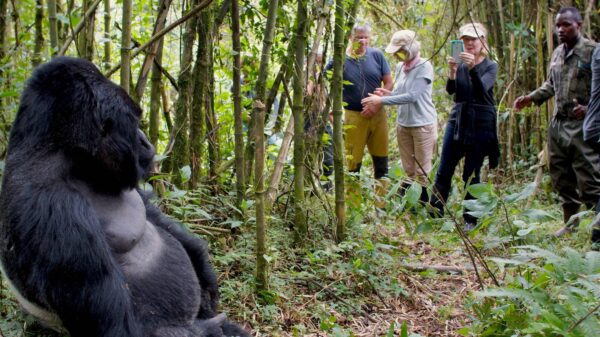
How Difficult is Gorilla Trekking in Bwindi Impenetrable Forest?
November 27, 2025
How Close Can I Get to Wildlife on a Walking Safari?
November 27, 2025How Crowded Are the Parks During Peak Migration Season?
When travelers ask, How crowded are the parks during peak migration season?, they are trying to gauge the intensity of human traffic in top safari destinations such as Kenya and Tanzania. The Great Migration, a natural spectacle involving millions of wildebeest, zebras, and gazelles, draws tourists from around the globe to observe this unparalleled wildlife event. This phenomenon is central to Kenya Safaris and Tanzania Safaris, offering unique opportunities for game drives, photography, birding, and immersive wildlife observation.
Understanding Visitor Dynamics During the Great Migration
Peak migration season generally occurs between July and October in Kenya’s Maasai Mara and from June to September in Tanzania’s Serengeti, depending on the movement patterns of the herds. During these months, visitor numbers increase dramatically as wildlife enthusiasts, photographers, and adventure travelers converge on these iconic ecosystems. Understanding park congestion is essential for planning Kenya Wildlife Safaris, Tanzania Wildlife Safaris, Kenya Birding Safaris, and even multi-destination itineraries that include Rwanda Gorilla Trekking Safaris or Tanzania Chimpanzee Tracking Safaris.
While crowds are higher, park management authorities and professional safari operators like Renai Safaris implement measures to maintain quality experiences. Vehicle restrictions, limited group sizes for guided treks, and designated viewing areas ensure that each visitor can enjoy the spectacle without compromising safety or wildlife welfare. By understanding how crowded the parks get during peak migration season, travelers can better plan their Kenya Best Safaris and Tanzania Great Migration experiences, choosing itineraries that balance human presence with optimal wildlife encounters.
Visitor Density in Kenya’s Maasai Mara During Peak Season
A key question is, How crowded are the parks during peak migration season in Kenya? The Maasai Mara National Reserve experiences a significant influx of tourists between July and October, coinciding with the arrival of migratory herds from Tanzania’s Serengeti. During this time, the iconic Mara River crossings attract not only millions of wildebeest but also hundreds of safari vehicles and visitors eager to capture the drama of predator-prey interactions.
Despite higher numbers, the experience can remain exceptional due to effective park regulations. Group sizes for guided drives are often limited to prevent congestion, and professional safari operators like Renai Safaris schedule game drives to avoid peak vehicle traffic. Travelers combining Kenya Wildlife Safaris with Kenya Birding Safaris or Kenya Cultural Safaris can still find quieter observation points away from main viewing areas, ensuring an immersive encounter with both wildlife and local traditions.
During peak migration, accommodations within the Maasai Mara, ranging from luxury lodges to eco-friendly tented camps, also experience high occupancy. Advanced booking is strongly recommended to secure premium experiences. Moreover, travelers can enhance their multi-country safari by pairing Kenya Safaris with Uganda Gorilla Trekking Safaris, ensuring a blend of savannah spectacle and rainforest primate encounters even during crowded periods. Understanding visitor density helps tourists plan their timing, transport, and itinerary to enjoy the Kenya Best Safaris experience fully.
Park Congestion in Tanzania’s Serengeti During Peak Migration
Travelers often ask, How crowded are the parks during peak migration season in Tanzania? The Serengeti National Park, particularly the northern and western corridors, sees an influx of international tourists between June and September as the migratory herds move toward Kenya. While Tanzania’s vast landscapes accommodate large numbers, congestion can occur at river crossings and popular vantage points where photographers and guides converge.
Professional safari operators manage this by staggering departure times, using multiple access roads, and guiding visitors to less crowded observation points. Tanzania Wildlife Safaris and Tanzania Birding Safaris are carefully scheduled to maximize wildlife encounters while minimizing overlap with other vehicles. For those seeking a multi-faceted safari, combining Tanzania Safaris with Rwanda Gorilla Trekking Safaris offers an opportunity to enjoy primate-focused adventures in less trafficked areas, balancing the crowds experienced in the Serengeti.
Peak season in the Serengeti also coincides with cultural festivals in local Maasai communities, allowing travelers to participate in Kenya Cultural Safaris or Tanzania Cultural Safaris alongside wildlife observation. Despite higher tourist numbers, careful itinerary planning ensures an immersive experience without feeling overwhelmed by congestion. By understanding where and when crowds peak, travelers can enjoy the Tanzania Great Migration and other East African wildlife spectacles comfortably and responsibly.
Timing and Strategies to Avoid Crowds
Another common question is, How crowded are the parks during peak migration season, and how can I avoid congestion? Timing is a crucial factor. Early morning or late afternoon game drives often offer less crowded conditions, as most vehicles follow a traditional midday schedule. Choosing lesser-known regions of the Maasai Mara or Serengeti, such as the Mara North Conservancy or Western Serengeti, provides solitude and more intimate wildlife encounters.
For travelers combining Kenya Safaris, Tanzania Safaris, and Rwanda Gorilla Trekking Safaris, spreading the itinerary across multiple parks and countries can mitigate peak-season crowding. Professional operators like Renai Safaris also manage group sizes, prioritize off-peak drive schedules, and recommend accommodation in strategically located lodges or camps, enhancing privacy and comfort.
Advanced planning and early booking allow travelers to secure prime game drive slots, river crossing views, and photography opportunities. Incorporating Kenya Birding Safaris or cultural tours into the itinerary provides additional experiences during periods when wildlife viewing may be busier, ensuring continuous engagement and satisfaction. By employing these strategies, tourists can enjoy a comprehensive East African safari while navigating peak-season crowds efficiently.
Balancing Wildlife Experience and Cultural Engagement
Travelers frequently ask, How crowded are the parks during peak migration season, and can I still engage in cultural experiences? Even during periods of high tourist activity, it is possible to integrate cultural encounters without feeling overwhelmed. Kenya Cultural Safaris and Tanzania Cultural Safaris offer visits to Maasai, Samburu, and Hadzabe communities, providing intimate experiences away from main wildlife viewing areas.
Cultural tours are often less affected by migration-related crowding, allowing travelers to explore traditional dances, crafts, and lifestyle practices at a relaxed pace. Combining these experiences with Kenya Wildlife Safaris, Tanzania Wildlife Safaris, and Rwanda Gorilla Trekking Safaris creates a balanced itinerary that includes both wildlife spectacle and human heritage. Multi-country itineraries enhance the safari experience, allowing guests to navigate crowded periods in one region while enjoying less populated attractions in another.
For bird enthusiasts, Kenya Birding Safaris can be scheduled in parks or conservancies adjacent to high-traffic migration areas, providing opportunities for observation without competing with large vehicle convoys. This integration ensures travelers benefit from East Africa’s rich biodiversity and cultural heritage simultaneously, maintaining high-quality safari experiences even during peak migration season.
Accommodation and Vehicle Considerations During Peak Season
Another consideration is, How crowded are the parks during peak migration season, and how do I choose accommodation and vehicles? Lodges and tented camps within Maasai Mara and Serengeti often reach full capacity during July–October. Booking early through professional operators like Renai Safaris ensures access to the best accommodations, safari vehicles, and guided experiences.
Open-top 4×4 vehicles or safari vans with pop-up roofs enhance wildlife observation even in crowded areas. Scheduling staggered game drives reduces congestion and allows travelers to enjoy uninterrupted viewing of wildebeest herds, zebras, and predators. Combining Kenya Safaris with Rwanda Gorilla Trekking Safaris or Tanzania Chimpanzee Tracking Safaris allows visitors to experience both savannah and forest ecosystems, diversifying their journey and alleviating crowd pressure during peak wildlife viewing periods.
Travelers should also consider smaller conservancies or private reserves in Kenya and Tanzania, which provide exclusive wildlife experiences away from large tour groups. Such planning enhances Kenya Best Safaris and Tanzania Great Migration adventures, delivering personalized encounters while managing the impact of seasonal tourist influx.
Conservation and Responsible Tourism Amid Crowds
Many visitors ask, How crowded are the parks during peak migration season, and how does this affect conservation? High tourist numbers during peak migration present both opportunities and challenges. Revenue from Kenya Safaris and Tanzania Safaris supports conservation initiatives, anti-poaching efforts, and community development. However, excessive vehicle traffic can disturb wildlife if not managed properly.
Professional safari operators implement guidelines to minimize environmental impact, including limiting vehicle numbers per viewing point, maintaining safe distances, and following designated routes. Combining Kenya Wildlife Safaris or Tanzania Wildlife Safaris with Rwanda Gorilla Trekking Safaris ensures that travelers contribute to responsible tourism practices across multiple ecosystems. Awareness of park crowding and adherence to ethical guidelines support the long-term sustainability of East Africa’s iconic migration spectacle.
Conclusion: Experiencing the Migration Without Feeling Overwhelmed
So, How crowded are the parks during peak migration season? While visitor numbers increase significantly during July–October, strategic planning, professional guidance, and multi-activity itineraries allow travelers to enjoy the Kenya Great Migration, Tanzania Great Migration, Kenya Birding Safaris, Kenya Cultural Safaris, and Rwanda Gorilla Trekking Safaris without feeling overwhelmed.
By choosing optimal game drive times, exploring lesser-known regions, integrating cultural and birding experiences, and selecting the right accommodations and vehicles, tourists can maximize enjoyment and minimize crowd-related challenges. Renai Safaris ensures that guests receive expert advice, personalized itineraries, and professional support, delivering memorable, immersive, and responsible East African safari experiences.
Ultimately, understanding park congestion during peak migration season empowers travelers to make informed decisions, balancing wildlife encounters, cultural engagement, and primate trekking in a seamless multi-country safari adventure. With proper planning, the Kenya Best Safaris and Tanzania Great Migration experiences remain awe-inspiring, safe, and unforgettable, even amidst seasonal crowds.





